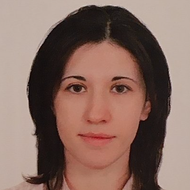- A
- A
- A
- АБB
- АБB
- АБB
- А
- А
- А
- А
- А
- Национальный исследовательский университет «Высшая школа экономики»
- Факультеты
- Факультет экономических наук
- Школа финансов
- Учебные курсы
- Python для финансистов 2022 и 2023 учебного года
-
О Школе финансов
-
- Базовые кафедры компаний-партнёров
- Лаборатории
- Сотрудничество Школы финансов и ПАО "Сбербанк"
-
Образовательная деятельность
- На академических программах
- На прикладных программах
-
Проекты
-
- Проектная модель обучения 2025/2026 учебный год
- Проектная модель обучения 2024/2025 учебный год
- Проектная модель обучения 2023/2024 учебный год
- Проектная модель обучения 2022/2023 учебный год
- Проектная модель обучения 2021/2022 учебный год
- Проектная модель обучения 2020/2021 учебный год
- Первый опыт 2019/2020 учебный год
-
-
- БИЗНЕС-ОБРАЗОВАНИЕ
-
ОНЛАЙН-КУРСЫ
-
На платформе "Открытое образование"
-
-
Научная деятельность
- Научно-исследовательские семинары
- Аспиранты
- Journal of Corporate Finance Research
- Серия монографий для издательства Springer
- Издательства
- Сервисы Springer
- Международная конференция «ESG Corporate Dynamics: the Challenges for Emerging Capital Markets»
- Международный семинар «Системные риски в финансовом секторе»
- Ясинская (Апрельская) конференция
- Международный аспирантский семинар
- Стратегические проекты
- Патенты и результаты интеллектуальной деятельности
- Публикации преподавателей Школы финансов
- Участие преподавателей Школы финансов в конференциях
-
Центр баз данных
Школа финансов ВШЭ
119049 Москва, Покровский бульвар, 11,
офис S629.
Телефоны:
+7 (495) 772-95-90*27447, *27190, *27947 (по общим вопросам Школы финансов)
+7 (495) 621-91-92 (по вопросам Бизнес-образования)
+7 (495) 916-88-08 (Магистерская программа "Корпоративные финансы")
E-mail:
df@hse.ru (по общим вопросам Школы финансов),
finance@hse.ru (по вопросам Бизнес-образования)
ординарный профессор НИУ ВШЭ, доктор экономических наук, заслуженный работник высшей школы РФ
Школа финансов ВШЭ — лидирующий в стране центр компетенций в области корпоративных финансов, оценки стоимости, банковского дела, фондового рынка, управления рисками и страхования, учета и аудита.
Наш университет - первый в России в глобальном рейтинге "QS – World University Rankings by subject" (2022) в предметной области Accounting and Finance, а так же первый среди российских университетов в области Business & Management Studies.
 Российские корпорации на пути к антихрупкости. Финансовая архитектура компаний
Российские корпорации на пути к антихрупкости. Финансовая архитектура компаний
Григорьева С. А., Жукова Ю. Д., Завертяева М. А. и др.
М.: Издательский дом НИУ ВШЭ, 2025.
В печати
Финансы и бизнес. 2025. Т. 22. № 2.
В кн.: Российские корпорации на пути к антихрупкости. Финансовая архитектура компаний. М.: Издательский дом НИУ ВШЭ, 2025. Гл. 2. С. 27-69.
Financial Economics. WP HSE. HSE University, 2025. No. 1/FE/2025.
Python in Finance
- О ВЫШКЕ
- Цифры и факты
- Руководство и структура
- Устойчивое развитие в НИУ ВШЭ
- Преподаватели и сотрудники
- Корпуса и общежития
- Закупки
- Обращения граждан в НИУ ВШЭ
- Фонд целевого капитала
- Противодействие коррупции
- Сведения о доходах, расходах, об имуществе и обязательствах имущественного характера
- Сведения об образовательной организации
- Людям с ограниченными возможностями здоровья
- Единая платежная страница
- Работа в Вышке
- ОБРАЗОВАНИЕ
- Лицей
- Довузовская подготовка
- Олимпиады
- Прием в бакалавриат
- Вышка+
- Прием в магистратуру
- Аспирантура
- Дополнительное образование
- Центр развития карьеры
- Бизнес-инкубатор ВШЭ
- Образовательные партнерства
- Обратная связь и взаимодействие с получателями услуг
-
http://www.minobrnauki.gov.ru/
Министерство науки и высшего образования РФ
-
https://edu.gov.ru/
Министерство просвещения РФ
-
http://www.edu.ru
Федеральный портал «Российское образование»
-
https://elearning.hse.ru/mooc
Массовые открытые онлайн-курсы
- © НИУ ВШЭ 1993–2025 Адреса и контакты Условия использования материалов Политика конфиденциальности Карта сайта
- Редактору





Преподаватель
Васильев Глеб Альбертович
Course Syllabus
Abstract
Learning Objectives
Expected Learning Outcomes
Course Contents
Assessment Elements
Interim Assessment
Bibliography
Recommended Core Bibliography
Recommended Additional Bibliography
Authors